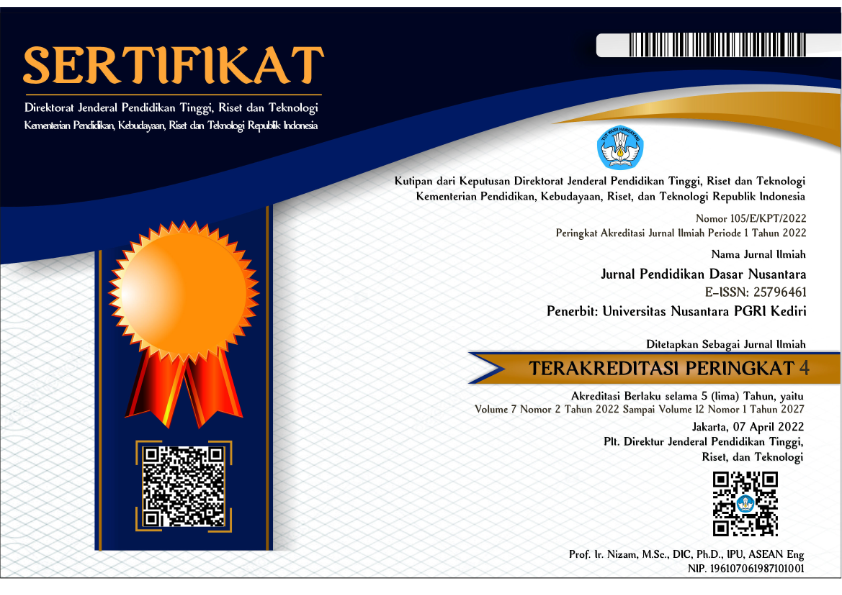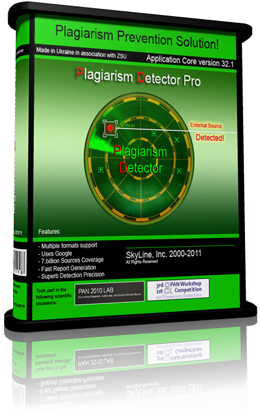Analysis of animation videos in online learning in class IV students of MI Imam Syafi'i
DOI:
https://doi.org/10.29407/jpdn.v7i2.16951Keywords:
Animated video analysis, online learning, MI Imam Syafi'IAbstract
This research aims to find out how to use video in online learning and find out obstacles in using animated videos in class IV MI Imam Syafi'I. Researchers used a qualitative approach with the teachers' assistance and fourth-grade students as subjects in the study. In collecting data using techniques, including observation techniques, interviews, questionnaires, and also documentation. For data analysis techniques used in researchers such as data reduction, data display, conclusion/drawing. Animated videos used by teachers when online learning are animated GIF types. The benefits of animated videos are to improve student understanding and increase student attractiveness during learning. Based on the research results, the use of media can help teachers to increase creative activities when carrying out learning activities so that students are not easily bored, lazy and students become excited and active when learning takes place online. Educators can see the understanding and enthusiasm of students through a questionnaire distributed by the homeroom teacher in the form of a link. Meanwhile, the delivery of material in online learning using animated videos has several obstacles during learning, such as inadequate signals and sometimes the student quota is also limited, so that making animated videos does not work well and the delivery of material in learning activities is also less than optimal
Downloads
References
A’la, Miftahul. 2010. Quantum Teaching. Yogyakarta: Diva Press.
Gilang R. K. 2020. Pembelajaran Daring. Banyumas:Lutfi Gilang
Munir, 2013. MULTIMEDIA dan Konsep Aplikasi Dalam Pendidikan. Bandung: Penerbit Alfabeta
Nimah, Zulfatun (2013) PENGGUNAAN MEDIA VIDEO UNTUK MENINGKATKAN PEMAHAMAN SHALAT FARDLU PADA SISWA KELAS II MI AL-MUJAHIDIN GUMALAR ADIWERNA TEGAL. Undergraduate thesis, UIN Sunan Ampel Surabaya
Nur Azizah, A., Sri Nugraheni, A. 2020. ANALISIS TEKNIK MENYIMAK PUISI MELALUI VIDEO ANIMASI PADA SISWA KELAS 2 SD NEGERI TRIHARJO. Jakarta: Universitas Muhammadiyah Jakarta, Jurnal publikasi
Sugiyono. (2010). Metode Penelitian Pendidikan Pendekatan Kuantitatif, kualitatif, dan R&D. Bandung: Alfabeta.
Sugiyono. (2016). Metode Penelitian Kuantitatif, Kualitatif dan R&D. Bandung: PT Alfabet. Danandjadja, James. (1984). Folklor Indonesia.
Sugiyono. (2017). Metode Penelitian Kuantitatif, Kualitatif, dan R&D. Bandung: Alfabeta, CV
Downloads
Published
Issue
Section
License
Authors who publish with this journal agree to the following terms:
- Copyright on any article is retained by the author(s).
- The author grants the journal, the right of first publication with the work simultaneously licensed under a Creative Commons Attribution License that allows others to share the work with an acknowledgment of the work’s authorship and initial publication in this journal.
- Authors are able to enter into separate, additional contractual arrangements for the non-exclusive distribution of the journal’s published version of the work (e.g., post it to an institutional repository or publish it in a book), with an acknowledgment of its initial publication in this journal.
- Authors are permitted and encouraged to post their work online (e.g., in institutional repositories or on their website) prior to and during the submission process, as it can lead to productive exchanges, as well as earlier and greater citation of published work.
- The article and any associated published material is distributed under the Creative Commons Attribution-ShareAlike 4.0 International License

































